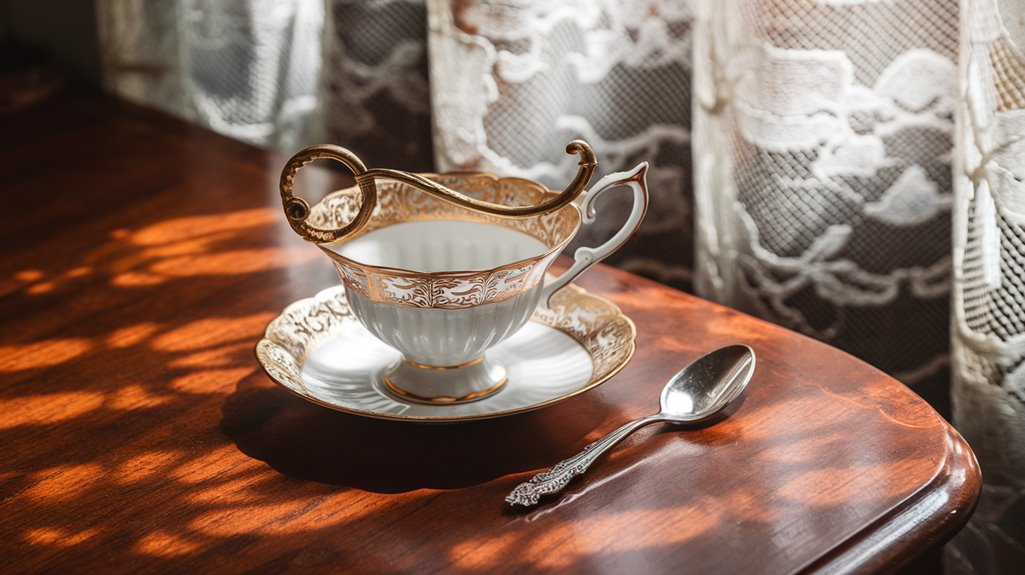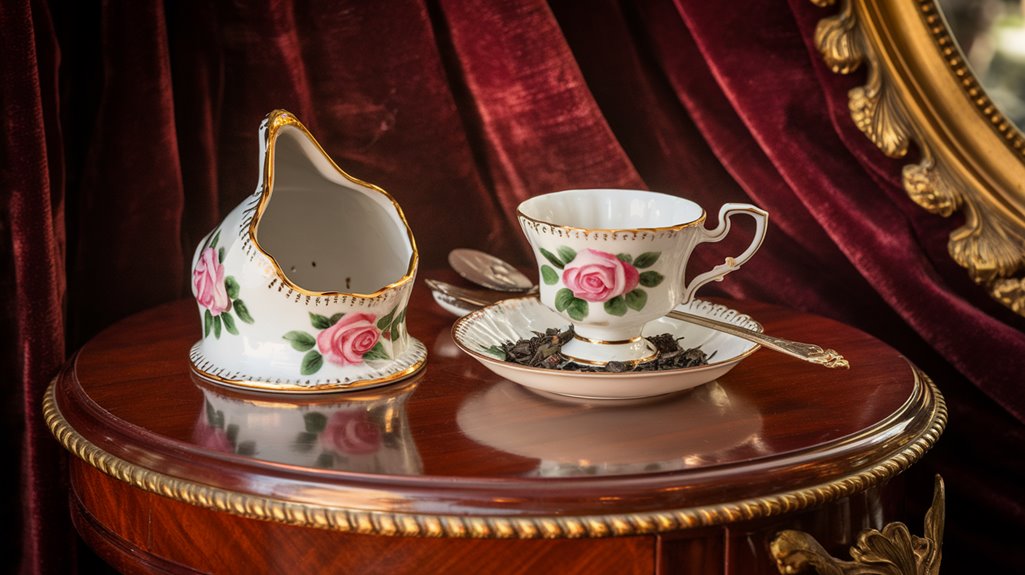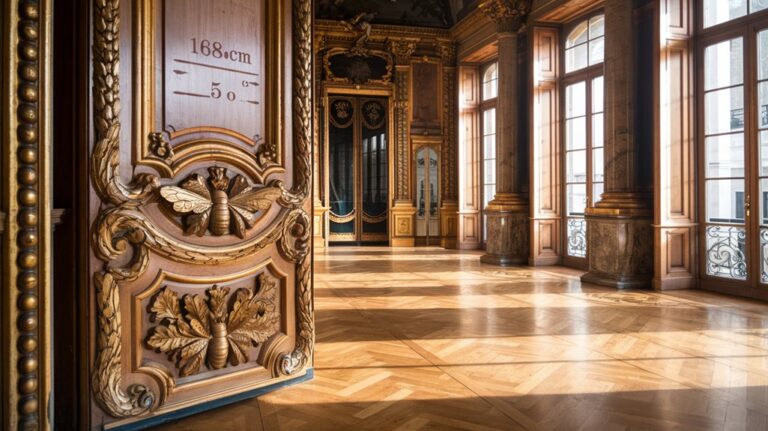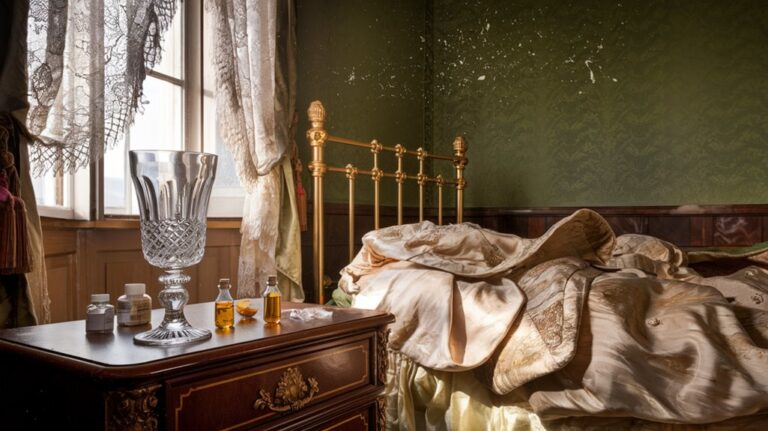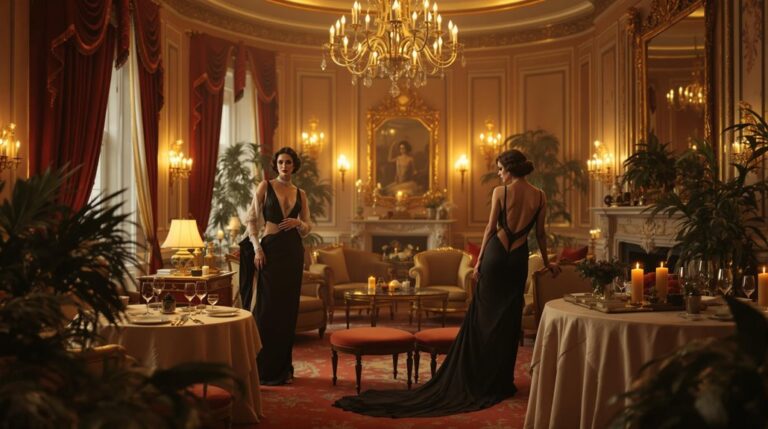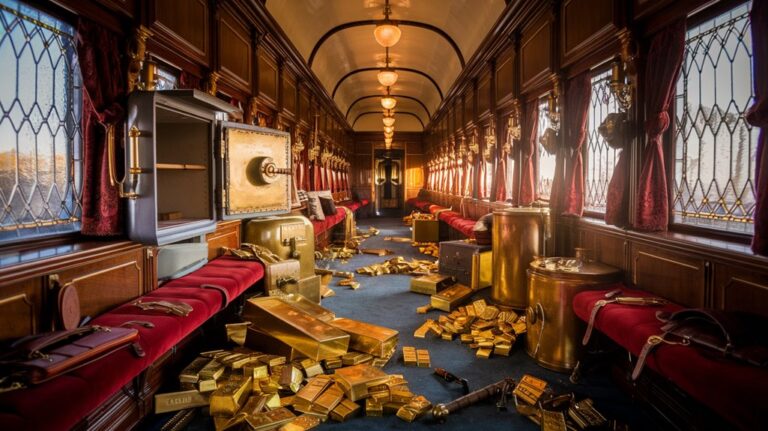Mustache-Guarding Teacups: Victorian Cups That Saved Mustaches
You've probably never considered how Victorian gentlemen managed to keep their elaborately waxed mustaches dry while sipping tea, but it was quite the predicament in the 1800s. Hot beverages could melt precious facial wax, stain carefully groomed whiskers, and ruin a man's dignified appearance. That's where Harvey Adams stepped in with his ingenious invention: the mustache cup. This peculiar piece of pottery tells us more than just a story about facial hair—it reveals the fascinating intersection of innovation, etiquette, and social status in Victorian society.
The Rise of Victorian Facial Hair Fashion and Its Drinking Dilemma
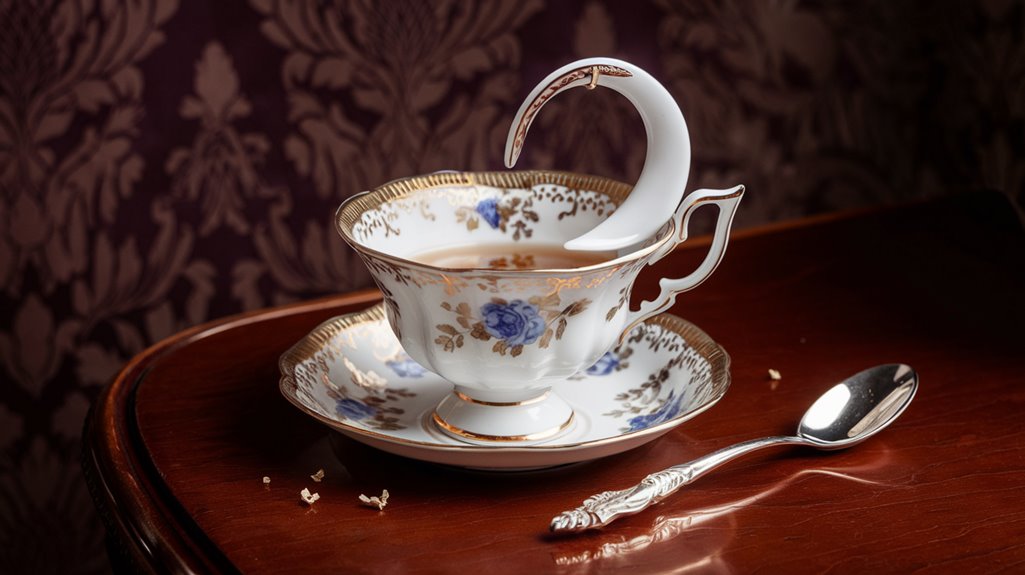
While today's facial hair trends come and go, the Victorian era marked a defining moment in the history of male grooming. You'd find that beards and whiskers weren't just fashion statements – they symbolized manliness, strength, and male beauty.
The masculinity trends gained momentum when soldiers returning from the Crimean War inspired a cultural shift in facial hair styles. British army regulations made upper lip hair mandatory for soldiers between 1860 and 1916. As beards became essential to a man's image, you'd see men anxiously seeking "preparations" to enhance their facial hair growth. Some desperate men resorted to using mechanical false whiskers to maintain appearances.
Even women tried styling their own facial hair to match the trend. The passion for facial hair created an unexpected problem: how to drink hot beverages without ruining your perfectly waxed mustache.
This dilemma led to one of the era's most innovative solutions – the mustache cup.
How Harvey Adams Revolutionized Tea Time With His Clever Design
Enter Harvey Adams, a British potter from Stoke-on-Trent who tackled the Victorian mustache dilemma head-on in the 1830s.
His ingenious solution was a porcelain teacup featuring a small ceramic ledge that protected gentlemen's facial hair while they sipped their tea. The guard allowed proper tea etiquette without compromising moustache maintenance.
You'll find Adams' design was brilliantly simple: a semi-circular opening in the cup's rim created a safe passage for liquid while keeping waxed mustaches dry and pristine. The invention was so revolutionary that Adams retired within 15 years from its tremendous success.
The invention proved so successful that it quickly became a must-have accessory for fashion-conscious Victorian men. Today, one such historic example can be found in the Second Guest Bedroom at Government House.
Produced in various sizes and styles, from elaborate personalized cups to larger "farmers' cups," these innovative vessels helped gentlemen maintain their dignity and their carefully groomed facial hair during teatime.
From Popular Innovation to Prized Collectible: The Journey of Moustache Cups
As mustache cups gained popularity throughout the Victorian era, they evolved from practical accessories into coveted collectors' items.
Invented by Harvey Adams in 1870, these innovative cups met a genuine need in Victorian society.
You'll find these unique cups were produced by prestigious manufacturers like Meissen and Royal Crown Derby, featuring everything from hunting scenes to geometric patterns.
While their popularity declined in the 1920s with the rise of clean-shaven faces, today's resurgence in moustache culture has sparked renewed interest in these distinctive pieces. These cups fell out of favor partly because Safety Razors became standard issue in military kits during WWI.
If you're hunting for authentic Victorian examples, you'll discover they're increasingly rare and valuable, especially those bearing American pottery marks.
Contemporary artisans have begun crafting modern versions to meet growing demand, but original collectible ceramics remain the holy grail for enthusiasts.
You can now spot these historical treasures in museums, where they showcase the fascinating intersection of Victorian ingenuity and style.

